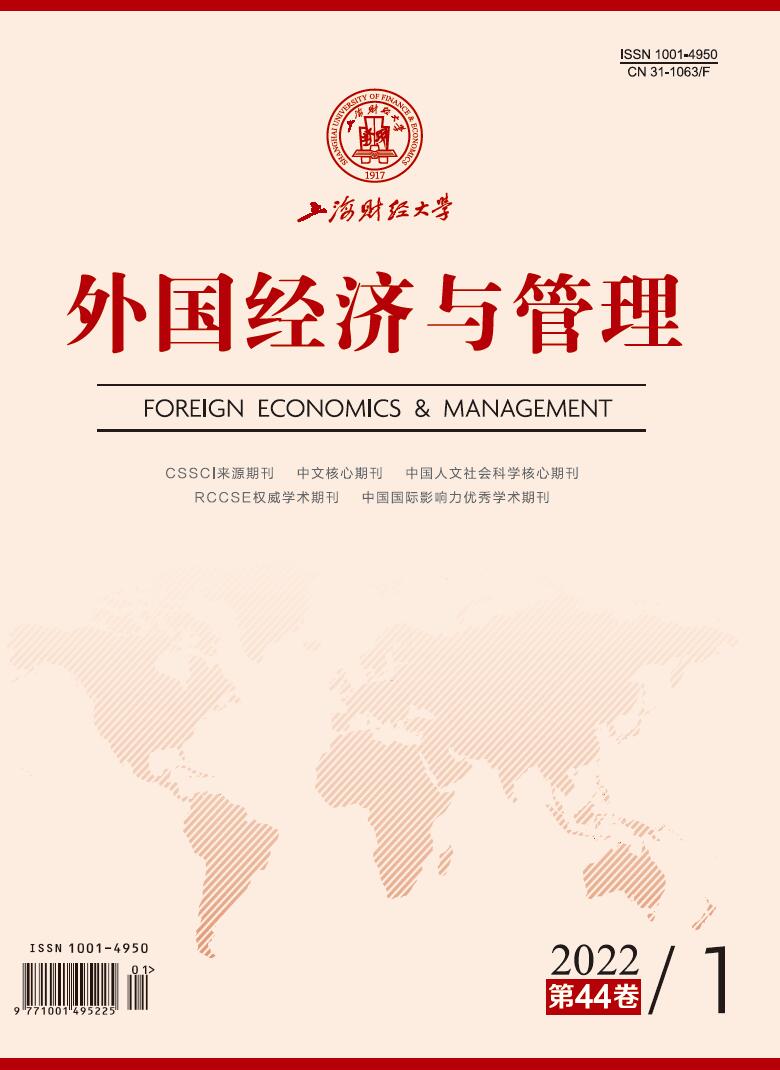随着全球经济发展环境的动态变化,时间逐渐成为决定国际化活动实施成效和企业未来高度的关键要素,在“走出去”过程中带给企业显著的先发优势。跨国企业有必要通过构建组织时间管理框架来支持其国际化活动。本文从时间管理视角出发,探索组织内部时间管理框架的构建对企业国际化速度的作用机制。文章采用SEM与fsQCA两种方法对134家浙江企业的调查数据进行了检验。实证研究的结果发现:强烈的时间紧迫感与稳步行动两种管理者时间观念在推动企业国际化进程中起重要作用。时间观念通过构建时间管理框架,完善企业的时间资源的储备与分配机制,进而提升国际化速度。时间领导力和共享时间认知在时间观念加快企业国际化速度的过程中起中介作用。本研究将组织行为中的时间管理延伸至国际商务领域,拓展了时间观念、时间领导力和共享时间认知的实证研究进展。研究成果有助于进一步揭示时间管理对组织的影响及其作用机制,对于面临外部环境剧变的中国企业如何实现时间管理,进一步提升国际化速度提供了实践参考。
组织时间管理如何作用于企业国际化速度?
摘要
参考文献
2 程聪. 中国企业跨国并购后组织整合制度逻辑变革研究: 混合逻辑的视角[J]. 管理世界,2020, 36(12): 127-144. DOI:10.3969/j.issn.1002-5502.2020.12.011
7 吴建祖, 毕玉胜. 高管团队注意力配置与企业国际化战略选择: 华为公司案例研究[J]. 管理学报,2013, 10(9): 1268-1274. DOI:10.3969/j.issn.1672-884x.2013.09.003
11 Abrantes A C M, Passos A M, Cunha M P E, et al. Bringing team improvisation to team adaptation: The combined role of shared temporal cognitions and team learning behaviors fostering team performance[J]. Journal of Business Research,2018, 84: 59-71. DOI:10.1016/j.jbusres.2017.11.005
12 Alipour K K, Mohammed S, Martinez P N. Incorporating temporality into implicit leadership and followership theories: Exploring inconsistencies between time-based expectations and actual behaviors[J]. The Leadership Quarterly,2017, 28(2): 300-316. DOI:10.1016/j.leaqua.2016.11.006
13 Ancona D G, Goodman P S, Lawrence B S, et al. Time: A new research lens[J]. Academy of Management Review,2001, 26(4): 645-663. DOI:10.2307/3560246
14 Antonakis J, Day D V, Schyns B. Leadership and individual differences: At the cusp of a renaissance[J]. The Leadership Quarterly,2012, 23(4): 643-650. DOI:10.1016/j.leaqua.2012.05.002
15 Chen J H, Nadkarni S. It’s about time! CEOs’ temporal dispositions, temporal leadership, and corporate entrepreneurship[J]. Administrative Science Quarterly,2017, 62(1): 31-66. DOI:10.1177/0001839216663504
16 Chetty S, Johanson M, Martín O M. Speed of internationalization: Conceptualization, measurement and validation[J]. Journal of World Business,2014, 49(4): 633-650. DOI:10.1016/j.jwb.2013.12.014
17 Claessens B J C. Perceived control of time: Time management and personal effectiveness at work[M]. Eitndhoven: Technische Universiteit Eindhoven, 2004.
18 Cohen S G, Mohrman S A, Mohrman A M Jr. We can’t get there unless we know where we are going: Direction setting for knowledge work teams[A]. Wageman R. Research on managing groups and teams: Research on managing groups and teams[M]. Greenwich: JAI Press, 1999.
19 Conte J M, Landy F J, Mathieu J E. Time urgency: Conceptual and construct development[J]. Journal of Applied Psychology,1995, 80(1): 178-185. DOI:10.1037/0021-9010.80.1.178
20 Crossan M, Cunha M P E, Vera D, et al. Time and organizational improvisation[J]. Academy of Management Review,2005, 30(1): 129-145. DOI:10.5465/amr.2005.15281441
21 Freeman S, Cavusgil S T. Toward a typology of commitment states among managers of born-global firms: A study of accelerated internationalization[J]. Journal of International Marketing,2007, 15(4): 1-40. DOI:10.1509/jimk.15.4.1
22 García-García R, García-Canal E, Guillén M F. Rapid internationalization and long-term performance: The knowledge link[J]. Journal of World Business,2017, 52(1): 97-110. DOI:10.1016/j.jwb.2016.09.005
23 Gevers J, Mohammed S, Baytalskaya N. The conceptualisation and measurement of pacing styles[J]. Applied Psychology,2015, 64(3): 499-540. DOI:10.1111/apps.12016
24 Gevers J M P, Rutte C G, Eerde W V. Meeting deadlines in work groups: Implicit and explicit mechanisms[J]. Applied Psychology,2006, 55(1): 52-72. DOI:10.1111/j.1464-0597.2006.00228.x
25 Halbesleben J R B, Novicevic M M, Harvey M G, et al. Awareness of temporal complexity in leadership of creativity and innovation: A competency-based model[J]. The Leadership Quarterly,2003, 14(4-5): 433-454. DOI:10.1016/S1048-9843(03)00046-8
26 Javalgi R R G, Todd P R. Entrepreneurial orientation, management commitment, and human capital: The internationalization of SMEs in India[J]. Journal of Business Research,2011, 64(9): 1004-1010. DOI:10.1016/j.jbusres.2010.11.024
27 Landy F J, Rastegary H, Thayer J, et al. Time urgency: The construct and its measurement[J]. Journal of Applied Psychology,1991, 76(5): 644-657. DOI:10.1037/0021-9010.76.5.644
28 Lin W T. Family ownership and internationalization processes: Internationalization pace, internationalization scope, and internationalization rhythm[J]. European Management Journal,2012, 30(1): 47-56. DOI:10.1016/j.emj.2011.10.003
30 Marx A, Dusa A. Crisp-Set Qualitative Comparative Analysis (csQCA), contradictions and consistency benchmarks for model specification[J]. Methodological Innovations Online,2011, 6(2): 103-148. DOI:10.4256/mio.2010.0037
32 Mohammed S, Angell L C. Surface-and deep-level diversity in workgroups: Examining the moderating effects of team orientation and team process on relationship conflict[J]. Journal of Organizational Behavior,2004, 25(8): 1015-1039. DOI:10.1002/job.293
33 Mohammed S, Nadkarni S. Temporal diversity and team performance: The moderating role of team temporal leadership[J]. Academy of Management Journal,2011, 54(3): 489-508. DOI:10.5465/amj.2011.61967991
34 Mohammed S, Harrison D A. The clocks that time us are not the same: A theory of temporal diversity, task characteristics, and performance in teams[J]. Organizational Behavior and Human Decision Processes,2013, 122(2): 244-256. DOI:10.1016/j.obhdp.2013.08.004
35 Mohammed S, Alipour K K. It's time for temporal leadership: Individual, dyadic, team, and organizational effects[J]. Industrial and Organizational Psychology,2014, 7(2): 178-182. DOI:10.1111/iops.12128
36 Mohr A, Batsakis G. Internationalization speed and firm performance: A study of the market-seeking expansion of retail MNEs[J]. Management International Review,2017, 57(2): 153-177. DOI:10.1007/s11575-016-0284-9
37 Ragin C. C. Redesigning social inquiry: Fuzzy sets and beyond[M]. Chicago: University of Chicago Press, 2008.
38 Shepherd D A, Williams T A, Patzelt H. Thinking about entrepreneurial decision making: Review and research agenda[J]. Journal of Management,2015, 41(1): 11-46. DOI:10.1177/0149206314541153
39 Shipp A J, Richardson H A. The impact of temporal schemata: Understanding when individuals entrain versus resist or create temporal structure[J]. Academy of Management Review,2021, 46(2): 299-319. DOI:10.5465/amr.2017.0384
40 Standifer R L, Raes A M L, Peus C, et al. Time in teams: Cognitions, conflict and team satisfaction[J]. Journal of Managerial Psychology,2015, 30(6): 692-708. DOI:10.1108/JMP-09-2012-0278
41 Waller M J, Zellmer-Bruhn M E, Giambatista R C. Watching the clock: Group pacing behavior under dynamic deadlines[J]. Academy of Management Journal,2002, 45(5): 1046-1055.
42 Zhang J C, Van Eerde W, Gevers J M P, et al. How temporal leadership boosts employee innovative job performance[J]. European Journal of Innovation Management,2020, 24(1): 23-42. DOI:10.1108/EJIM-05-2019-0112
引用本文
程聪, 贺易宁, 严璐璐, 等. 组织时间管理如何作用于企业国际化速度?[J]. 外国经济与管理, 2022, 44(1): 35-49.
导出参考文献,格式为:





 5653
5653  7538
7538

